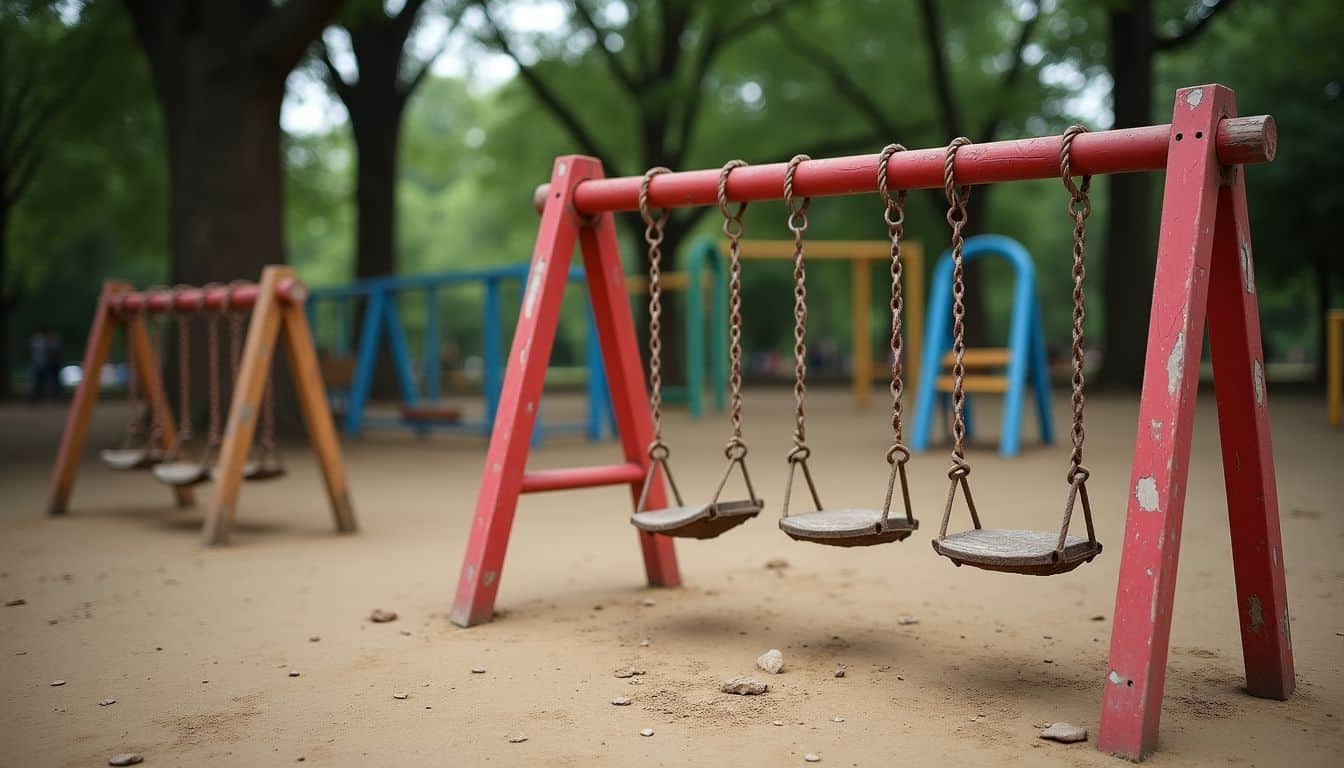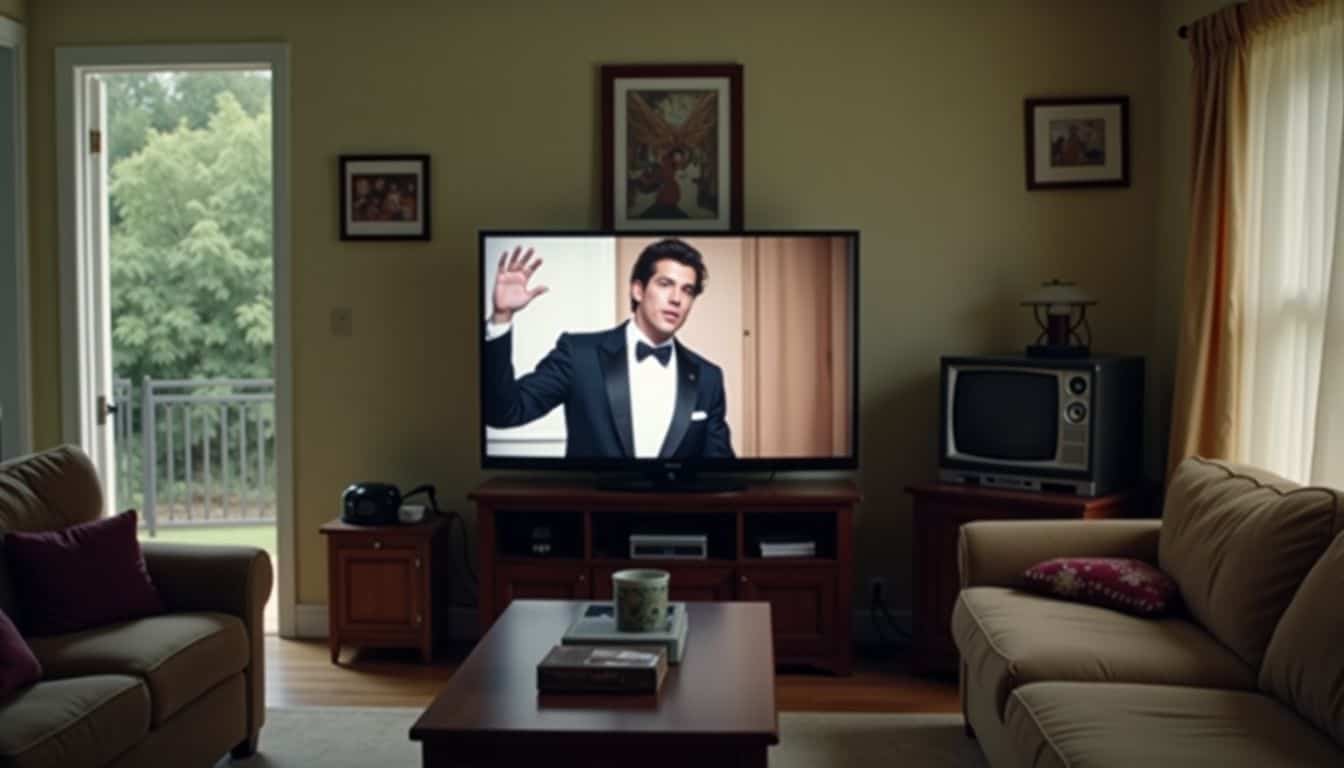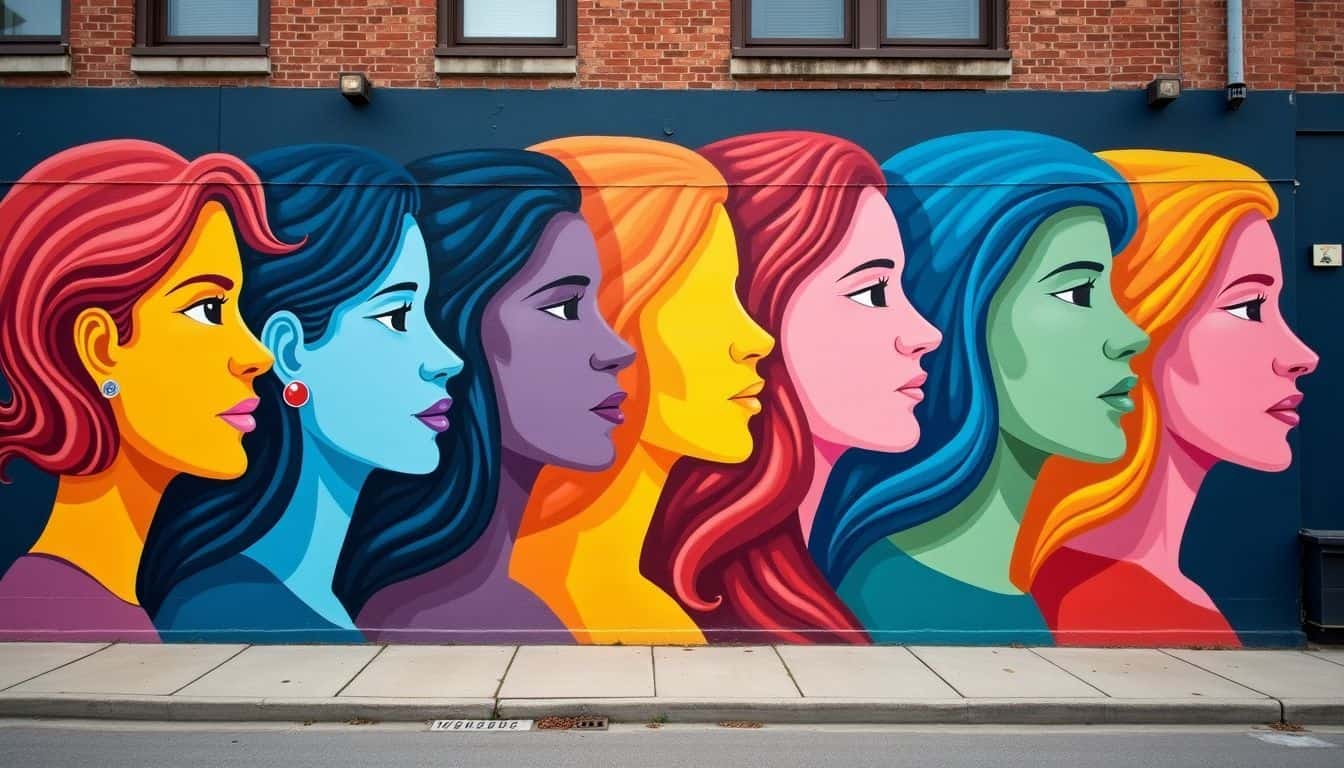Many men struggle with being called a “sissy” for not fitting into strict male roles. The term “sissy” comes from the word “sister” and has been used since 1879 to mock boys and men who seem less manly.
This post will explore what is the sissy stereotype, its harmful impact, and how some people turn this label into a source of pride. You’ll learn how to move from shame to strength.
Key Takeaways
The term “sissy” began as a nickname for Cecilia but became an insult for feminine men around 1879, making it the first recorded American slang term mocking gender-nonconforming males.
Studies from 2015 show “sissy” carries more stigma than “tomboy,” reflecting how our culture judges feminine traits in men more harshly than masculine traits in women.
The stereotype forces men into rigid gender roles by labeling those who show emotion, avoid sports, or enjoy “feminine” activities as weak or cowardly.
Media portrayals have evolved from using sissy characters as comic relief to sometimes showing them with depth and strength, helping fight femmephobia in our culture.
Some men have reclaimed the term “sissy” since the late 1980s, while Generation Z created “femboy” as a positive alternative that celebrates rather than mocks feminine expression in males.
Table of Contents
Understanding the Sissy Stereotype

The sissy stereotype paints men who show feminine traits as weak, unmanly, or less worthy of respect. This harmful label has deep roots in our culture and affects how boys learn to act, often pushing them to hide parts of themselves that don’t fit rigid gender norms.
Readers are invited to reflect on these points as they continue through the discussion.
Definition of the Sissy Stereotype

A “sissy” refers to boys and men who don’t fit typical masculine traits. This label attacks males who lack what society views as manly qualities – courage, strength, and stoicism. The word comes from “sister” and became an insult around 1885-1890.
This clear definition sets the stage for further discussion.
Men branded as “sissies” often face mockery for showing feminine traits or gender expression that breaks from masculine norms.
Studies from 2015 prove that “sissy” carries more stigma than “tomboy” does for girls who act masculine. This stereotype harms many males by forcing them into rigid gender roles and punishing any sign of softness or emotion.
The sissy stereotype connects deeply to gender non-conformity and affects many transgender individuals. Boys who display effeminate behavior often become targets for bullying. According to Crystal Green, a sissy husband expert at Tidbits of Experience, this label creates shame in men who don’t match assigned male at birth expectations.
The term “sissify” appeared between 1900-1905, showing how our culture actively tries to label and control male behavior that steps outside strict gender norms.
Characteristics Associated with the Stereotype

The sissy stereotype paints men and boys with specific traits that don’t fit traditional masculinity. These men often show interest in activities society labels as “feminine” – like fashion, cooking, or the arts.
They may speak with softer voices, use more hand gestures, or walk with less rigid postures than what people expect from males. The stereotype marks these men as weak, cowardly, and too emotional.
They might cry easily or avoid physical fights. Lack of athletic skill or interest in sports also gets men tagged as sissies in many social groups. This harmful label creates a false link between physical strength and a person’s worth as a man.
The greatest damage done by the sissy stereotype is not to the individual labeled, but to our collective understanding of what masculinity can be.
The media has shaped how we see these traits over time. Early sissy characters served as comic relief with their dramatic flair and flamboyant style. Their purpose was to make audiences laugh at their “oddness.”
After Hollywood censorship rules changed, these characters took darker turns, often becoming villains. This shift reinforced negative views of gender nonconformity in men. The historical context of this stereotype shows how deeply it has affected gender norms in our society.
Historical Context of the Sissy Stereotype

The sissy stereotype has roots in the early 20th century when rigid gender roles shaped social norms. Men who showed feminine traits faced harsh judgment and were often labeled as “sissies” – a term that gained power during a time when masculine ideals were strictly enforced.
This background emphasizes the lasting impact of traditional gender expectations.
Origins and Early Usage

The word “sissy” first appeared in American English between 1840 and 1850. It started as a nickname for Cecilia, used with affection in works like Charles Dickens’ “Hard Times” published in 1854.
This gentle beginning soon changed as the term took on a darker meaning. By 1879, “sissy” became the first recorded slang term in the U.S. that mocked boys and men who didn’t fit traditional gender roles.
School playgrounds turned “sissy” into a harsh insult that attacked anyone seen as too feminine or weak. The term gained power by linking gender nonconformity with cowardice and immaturity.
Boys who showed emotions or avoided rough play faced this label. The sissy stereotype grew from these early uses, creating lasting harm for men who expressed themselves outside strict masculine norms.
This language shaped how society viewed gender identity and still impacts how many men feel about showing their true sense of self today.
Evolution Over Time

The term “sissy” shifted from a mild insult to a harsh attack on masculinity during the 1930s. It became one of the most damaging insults in American sports, where men faced intense pressure to appear tough and strong.
Street gangs used this label to force boys into proving their manhood through violence or risky behavior. The British spelling “cissy” remained common until the mid-1970s before the American version took over.
A major change happened in the late 1980s when some men started reclaiming “sissy” as their own term. This shift marked a move from shame to pride for those who didn’t fit traditional gender roles.
More recently, Generation Z created the term “femboy” as a positive alternative that celebrates rather than mocks feminine expression in males. This evolution shows how language around gender nonconformity has gradually moved from stigma toward acceptance in some communities.
The Sissy Stereotype in Media and Culture

Media has shaped the sissy stereotype through decades of harmful portrayals in TV shows and movies. These images often mock men who don’t fit typical masculine norms, turning them into punchlines rather than full characters.
Representation in Popular Media

Movies and TV shows often show “sissies” as weak or laughable characters. Films use these stereotypes to make fun of men who don’t act “manly enough.” The 2009 “Routledge Dictionary of Modern American Slang” lists “sissy” as a common insult for effeminate males.
This affects how people see gender in real life. Yet, media has started to change. “South Park” took on transgender issues in their episode “The Cissy,” using satire to discuss bathroom debates.
Some modern portrayals now show these characters with strength and smarts. I have noticed this shift while watching newer shows that give depth to gender-nonconforming characters. These changes help fight femmephobia and sissyphobia in our culture.
Impact on Masculinity Norms

Media portrayals of sissy characters ripple into real-world views about what makes a “real man.” These images push rigid rules that hurt boys and men who don’t fit the tough guy mold.
Many guys feel trapped by these strict norms that label gentle traits as weak or wrong. I have seen friends struggle with this pressure firsthand, hiding their true selves to avoid being called a “sissy man.”
The sissy stereotype creates a false line between what’s manly and what’s not. Richard Green’s research found that many feminine boys later identified as gay or bisexual, but this does not mean all gender-nonconforming men fit one box.
This harmful view forces men to reject parts of themselves that don’t match traditional masculinity. Some men fight back by embracing their full selves, including traits others might call feminine.
Many guys now sport a masculine tattoo as a symbol of breaking free from these limits.
The Sissy Stereotype and Gender Studies

Gender studies has deepened our grasp of the sissy stereotype as more than just an insult. This field shows how terms like “sissy boy” or “sissy men” connect to broader issues faced by transgender people and the LGBTQ+ community.
Connection to Gender Nonconformity

Gender nonconformity sits at the heart of the sissy stereotype. Boys and men who show traits society labels as “feminine” often face harsh judgment. The sissy label targets those who step outside rigid masculine norms through their speech, movements, interests, or appearance.
This connects directly to how our culture views gender as a strict binary system. Many transgender people and femboys face this stigma when they express themselves in ways that do not match what others expect from their assigned sex at birth.
The fear of the sissy reflects our culture’s deeper fears about masculinity itself – that it might be fragile, constructed, or optional rather than natural and fixed.
Sissyphobia stems from both misogyny and homophobia in our society. It punishes men who display traits linked to women, treating femininity as lesser or weak. Scholar Shinsuke Eguchi points out how even within LGBTQ+ communities, some men try to be “straight-acting” to escape this stigma.
This shows how the stereotype affects not just gender expression but shapes how the English language itself frames masculinity. For many adolescents exploring their identity, these harmful labels create real barriers to self-acceptance.
Influence on LGBTQ+ Communities
Gender nonconformity connects directly to how the sissy stereotype shapes LGBTQ+ communities. This label has created both challenges and opportunities for people across the trans umbrella.
Many bisexual men and transgender women face this stereotype daily, which Richard Green’s 1987 study linked to later homosexuality through the “Sissy Boy Syndrome” research. The stereotype has pushed some community members toward cross-dressing or androgynous expression as forms of resistance.
Historical events have shaped how different generations in the LGBTQ+ community respond to the sissy label. As legal protections improved, the need for gay neighborhoods decreased, changing how people dealt with these stereotypes.
The tomgirl or sissy boy labels once forced many to hide, but now serve as rallying points in the fight against transphobic attitudes. This shift shows how the community has worked to turn stigma into strength, making space for those who do not fit traditional masculinity norms.
Addressing the Sissy Stereotype

We must tackle the sissy stereotype head-on by creating spaces where all forms of gender expression are valued. Breaking down these harmful labels starts with each of us speaking up when we hear slurs and teaching others about the real damage these stereotypes cause to the LGBTQ+ community.
Challenging Harmful Narratives
Harmful sissy stereotypes hurt real people every day. We can fight these damaging ideas with clear actions that promote respect for all gender expressions.
- Call out media that uses sissy boys as jokes or villains. I noticed this pattern while watching classic movies with my nephew and pointed out how these portrayals affect how he sees his classmates.
- Share stories that show gender-nonconforming people as heroes. The lgbtqia+ community has countless role models who break stereotypes while making positive impacts.
- Question phrases like “sissy pants” or “don’t be a sissy” in daily conversations. These words carry weight and harm people assigned at birth as male who express themselves differently.
- Support creators who portray diverse masculinities in positive ways. You might want to dress in a manly way sometimes, but that doesn’t mean everyone should.
- Talk to young men about how narrow gender rules hurt everyone. Biological sex doesn’t dictate personality, interests, or worth.
- Challenge bullying based on gender expression. Stand up when you see someone targeted for being “too feminine” or not fitting masculine norms.
- Learn about transgender women and their experiences. Many face extreme versions of the same stereotype that targets so-called sissies.
- Examine your own biases about what makes a “real man.” Our ideas often come from outdated cultural messages rather than truth.
- Amplify voices from different backgrounds like Asian American feminism that challenge western gender stereotypes.
- Create spaces where boys and men can express emotions freely. Crying, showing care, and being gentle are human traits, not feminine weaknesses.
Promoting Inclusivity and Respect
- Listen to trans women and gender non-conforming people about their experiences instead of making assumptions. I once thought I understood these issues until a transgender woman shared her story with me.
- Speak up when you hear others use terms like “sissy” as insults. Your voice matters in stopping hurtful language that harms real people.
- Check your own biases about what makes someone “manly” or not. Many of us grew up with strict ideas about how men should act.
- Learn about the history of the sissy stereotype and how it has hurt people who do not fit narrow gender roles. Knowledge builds empathy.
- Support media that shows diverse gender expressions in positive ways. Your viewing choices and feedback to creators make a difference.
- Talk to other men about why gender stereotypes limit everyone. These talks might feel awkward at first but open important doors.
- Stand against bullying of boys who show traits society labels as “feminine.” Kids need adults who defend their right to be themselves.
- Respect people’s chosen names and pronouns as a basic form of dignity. This simple act shows you see the person, not just a label.
- Create spaces where all gender expressions feel welcome. This might mean changing the tone of jokes or activities in friend groups.
- Understand that hormone therapy and other personal choices belong to the individual. Support means respecting these choices without judgment.
People Also Ask
What does the term “sissy” mean in today’s culture?
The term “sissy” has changed over time. Once just an insult, it now has different meanings. Some people use it to talk about sissy boyz or sissy baby role-play. Others see it as a slur that hurts men who do not act “manly enough.” The word carries both shame and, for some, a sense of taking back power.
How have feminists responded to the sissy stereotype?
Many feminists have worked to break down the sissy label. They point out that calling someone a “sissy” only works as an insult if society sees being like a woman as bad. Feminists fight the idea that feminine traits are weak. They support all gender expressions without linking them to any sex act or calling someone a slut for how they dress or act.
Is the sissy stereotype only about how someone looks?
No, the sissy stereotype goes beyond looks. It touches on how people talk, move, and express feelings. Society often labels men as “sissies” if they show emotion, speak softly, or enjoy things seen as feminine. This narrow view hurts everyone by limiting how people can be themselves.
How are some people turning the sissy label into something positive?
Some folks now claim the sissy label with pride. Instead of seeing it as shameful, they celebrate the blend of masculine and feminine traits. This shift from stigma to strength helps create more room for all types of gender expression. Communities of sissy boyz and others have formed spaces where people can be themselves without judgment.
References
https://en.wikipedia.org/wiki/Sissy
https://sites.lafayette.edu/fams101-sp15/2015/03/05/the-portrayal-of-the-sissy/
https://library.fiveable.me/key-terms/film-and-media-theory/sissy-stereotype
https://pmc.ncbi.nlm.nih.gov/articles/PMC7978647/
https://holybulliesandheadlessmonsters.blogspot.com/2024/06/lgbtq-history-sissy-stereotype-in.html
https://commons.emich.edu/cgi/viewcontent.cgi?article=1766&context=honors
https://cdr.lib.unc.edu/downloads/2f75r896n
https://clg.rmportal.net/fetch.php/scholarship/425327/PetticoatSissies.pdf

